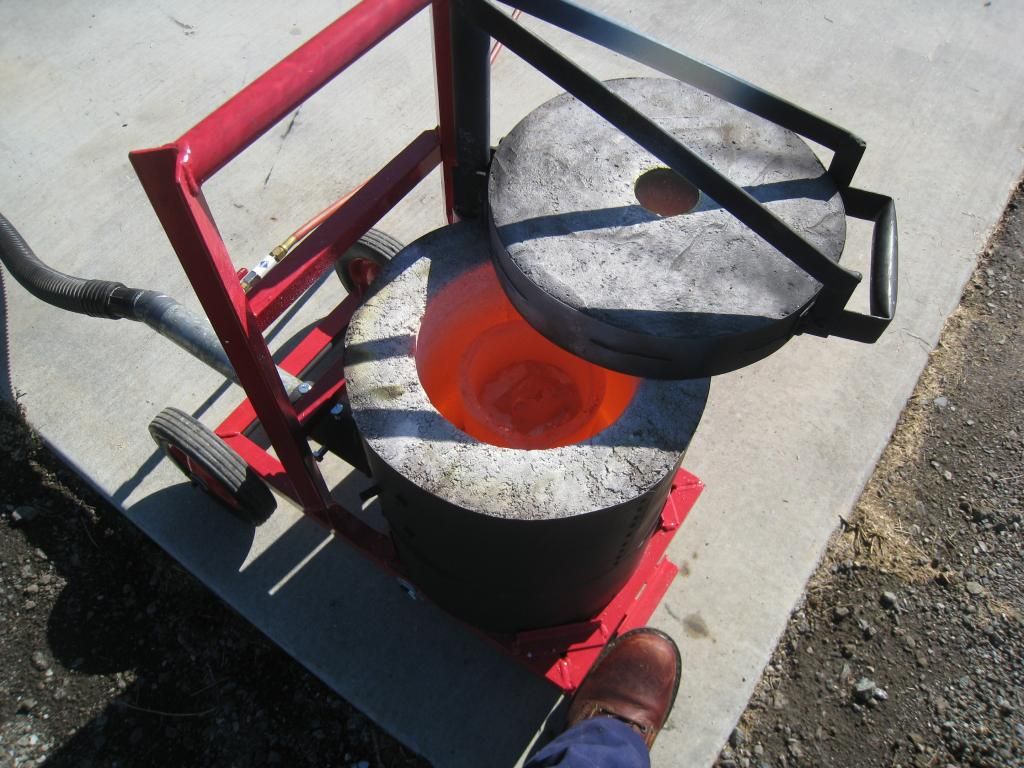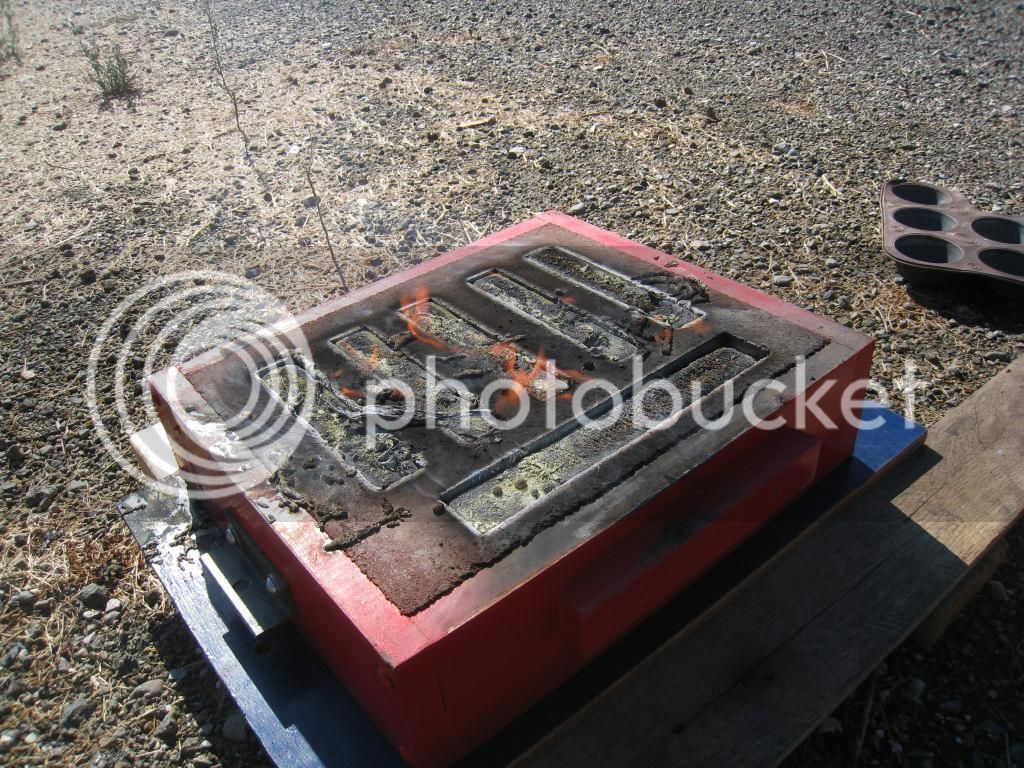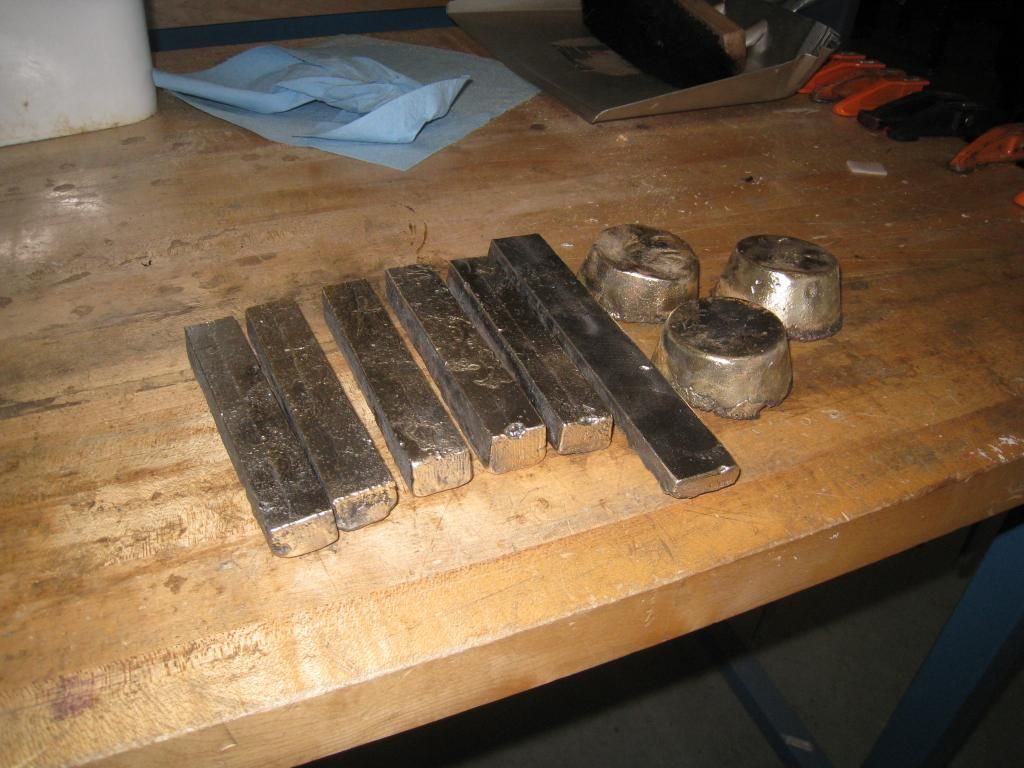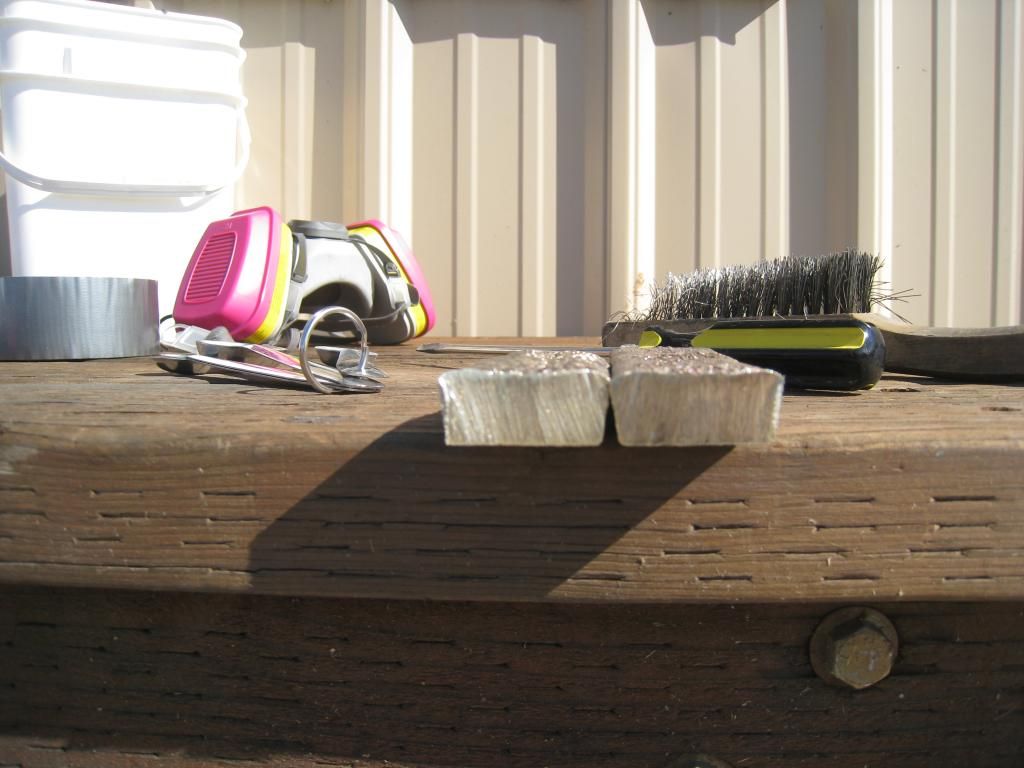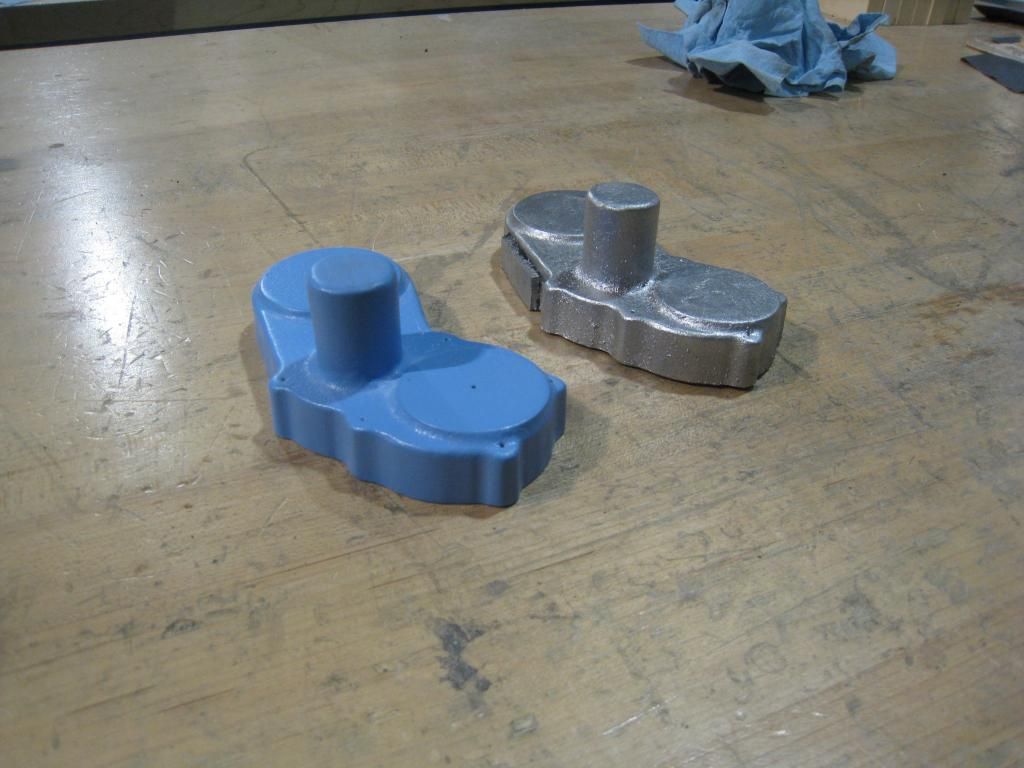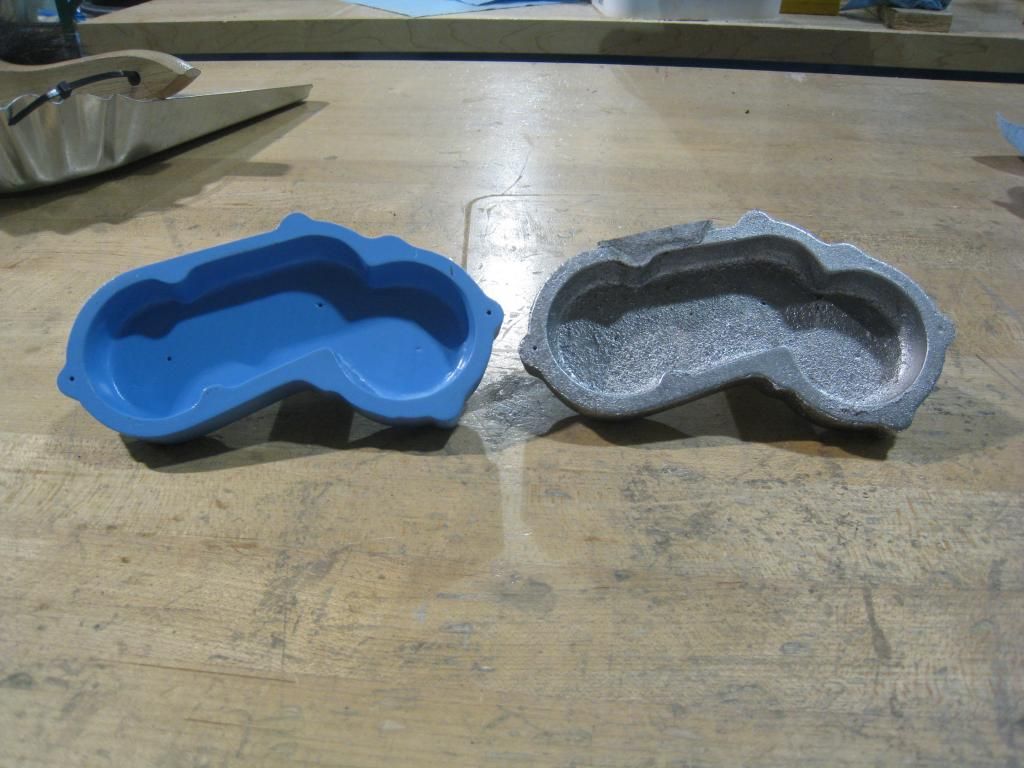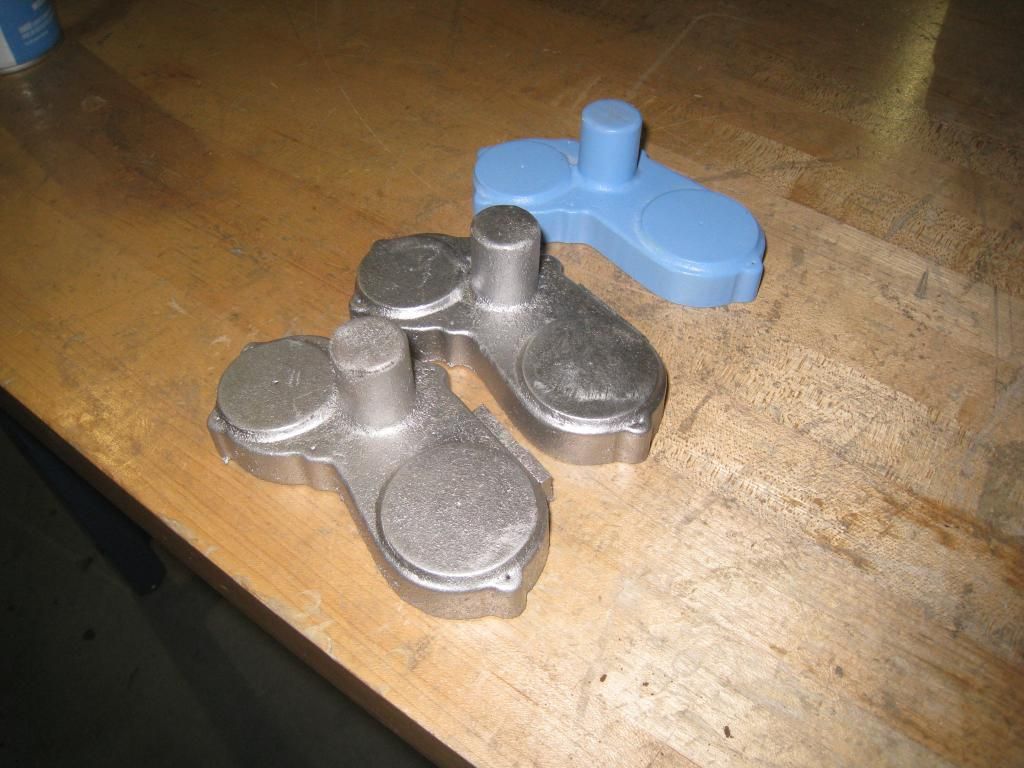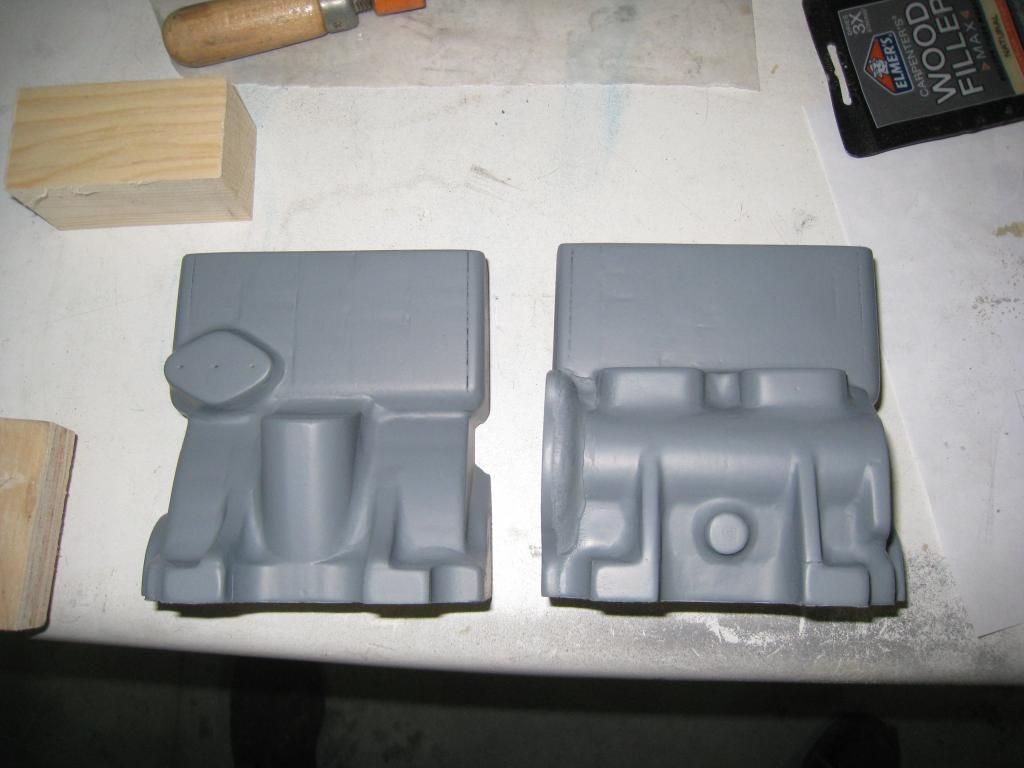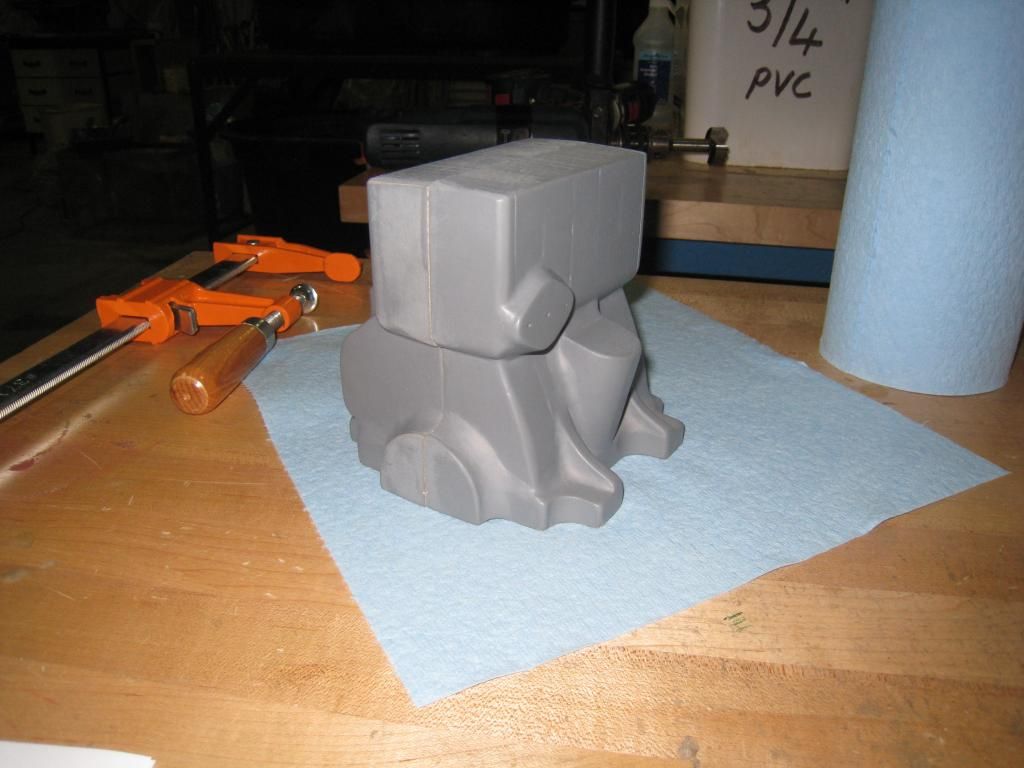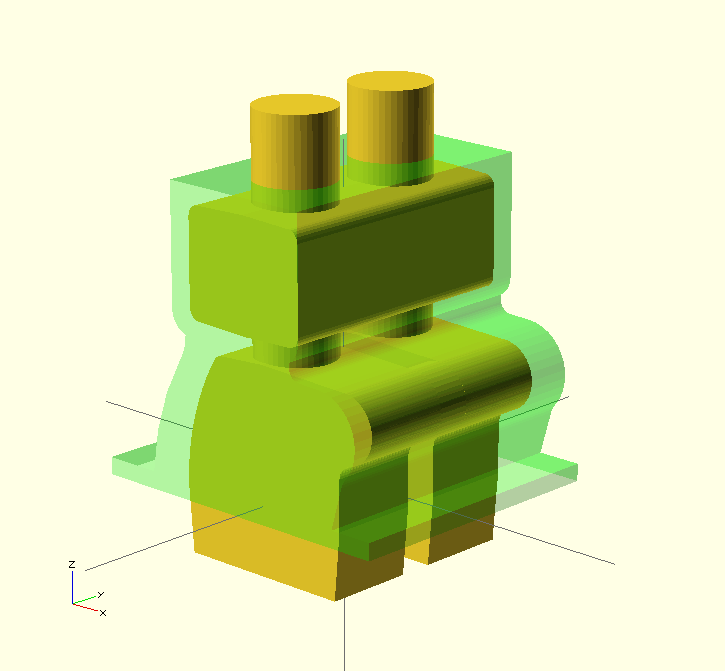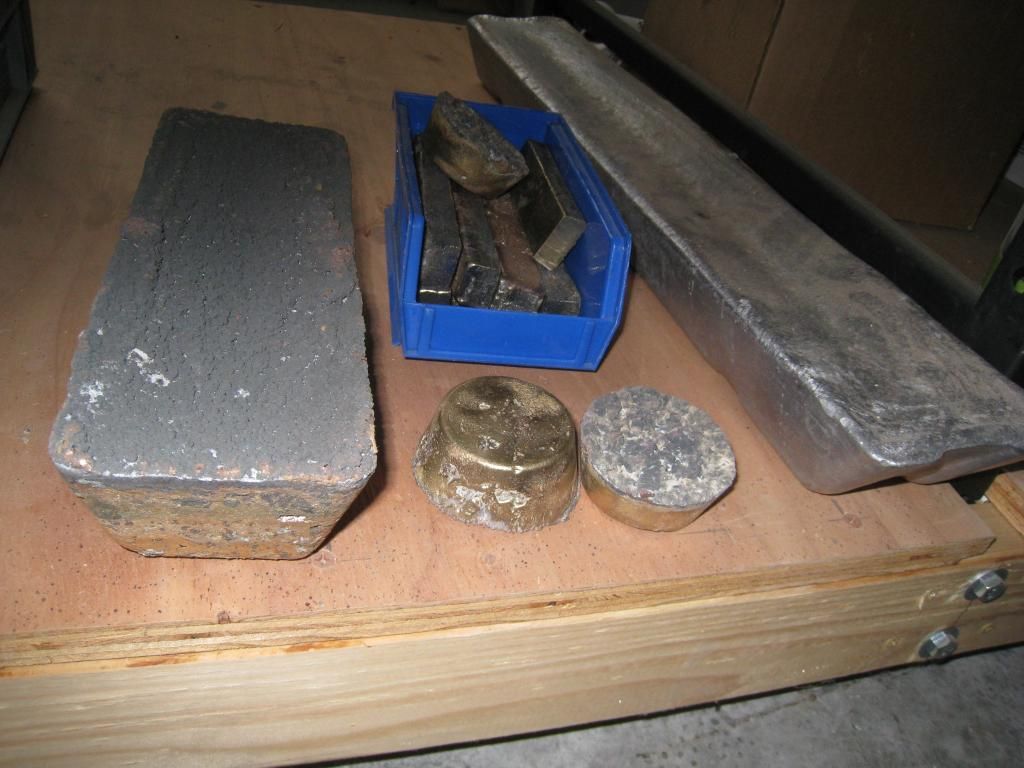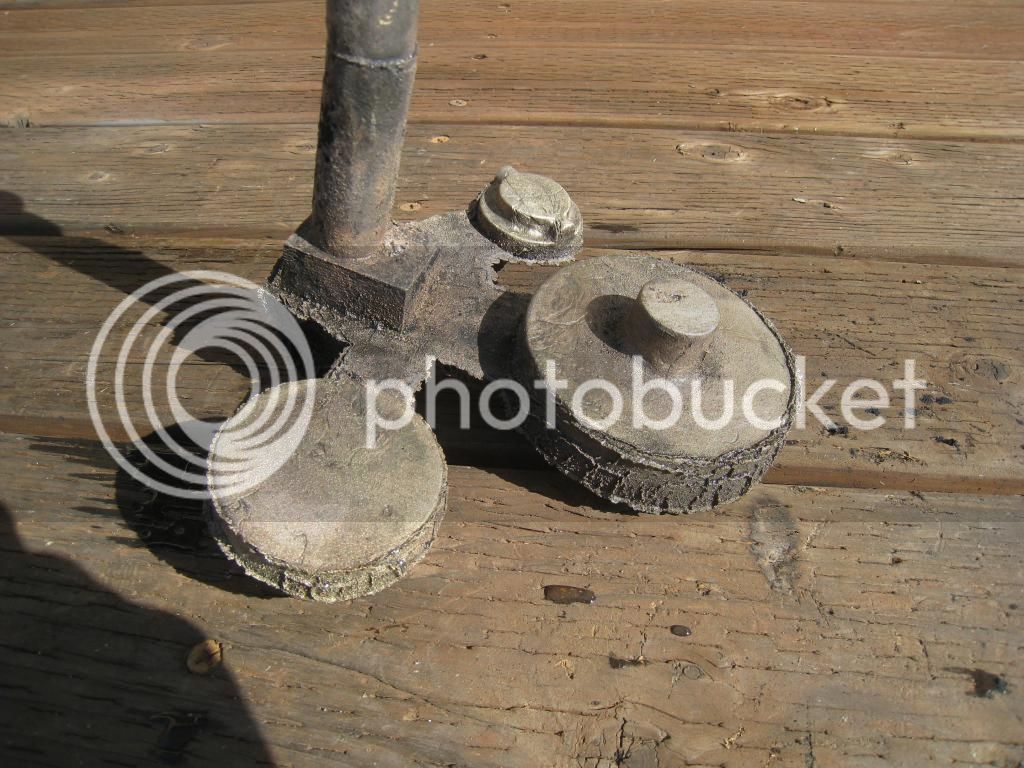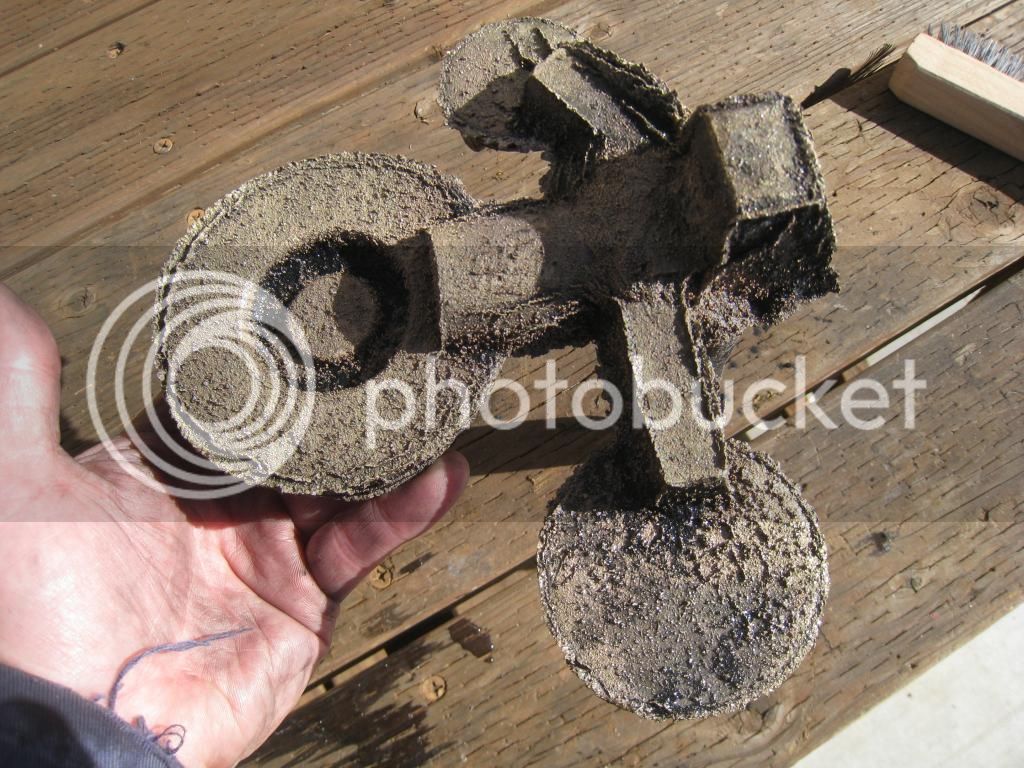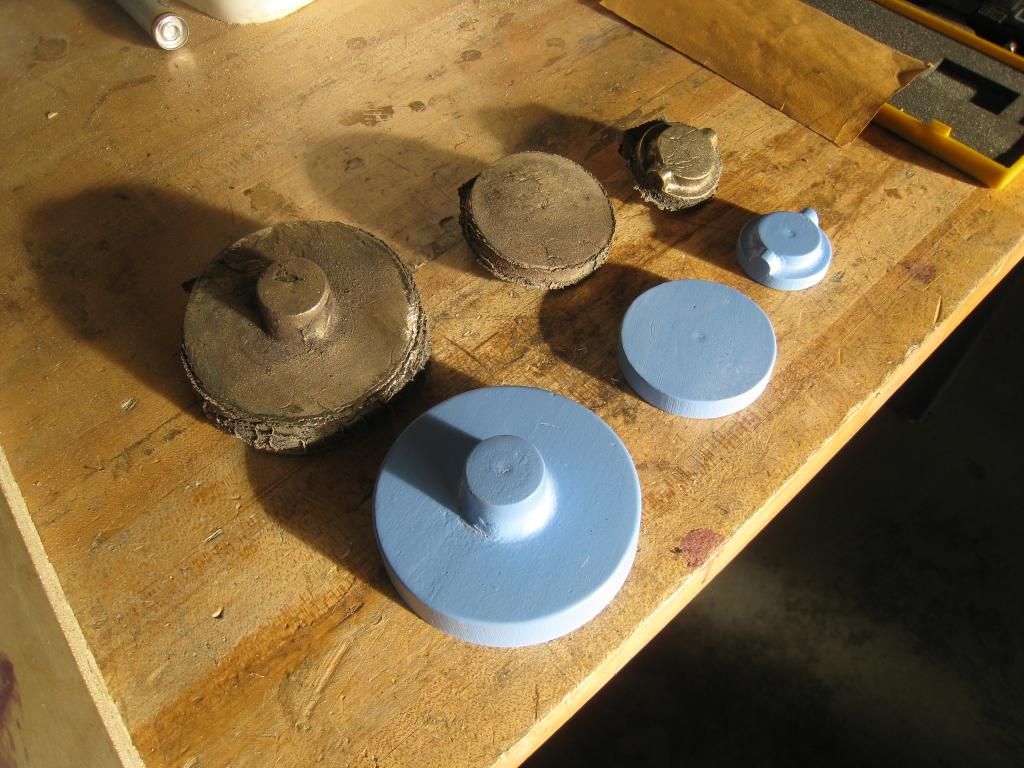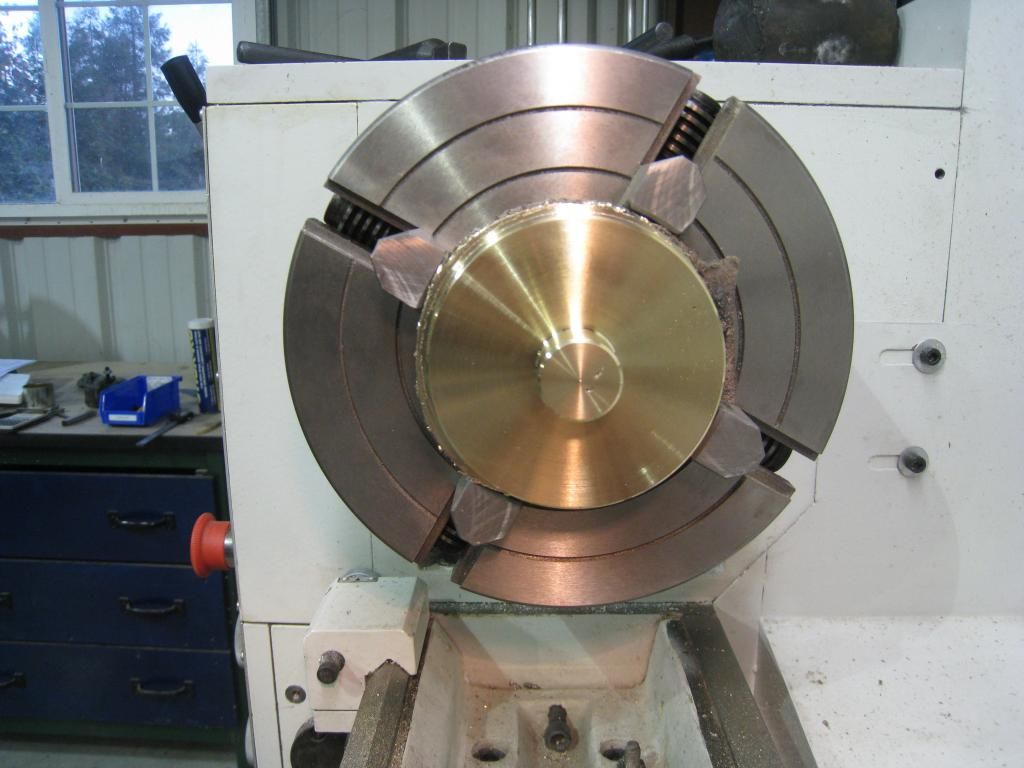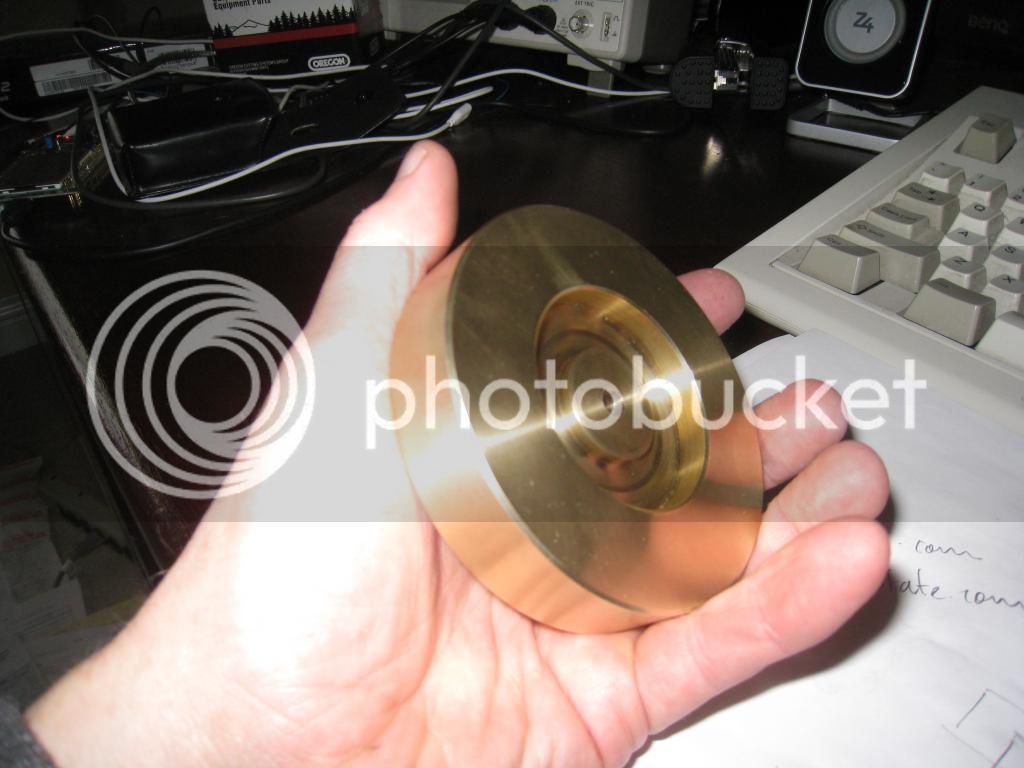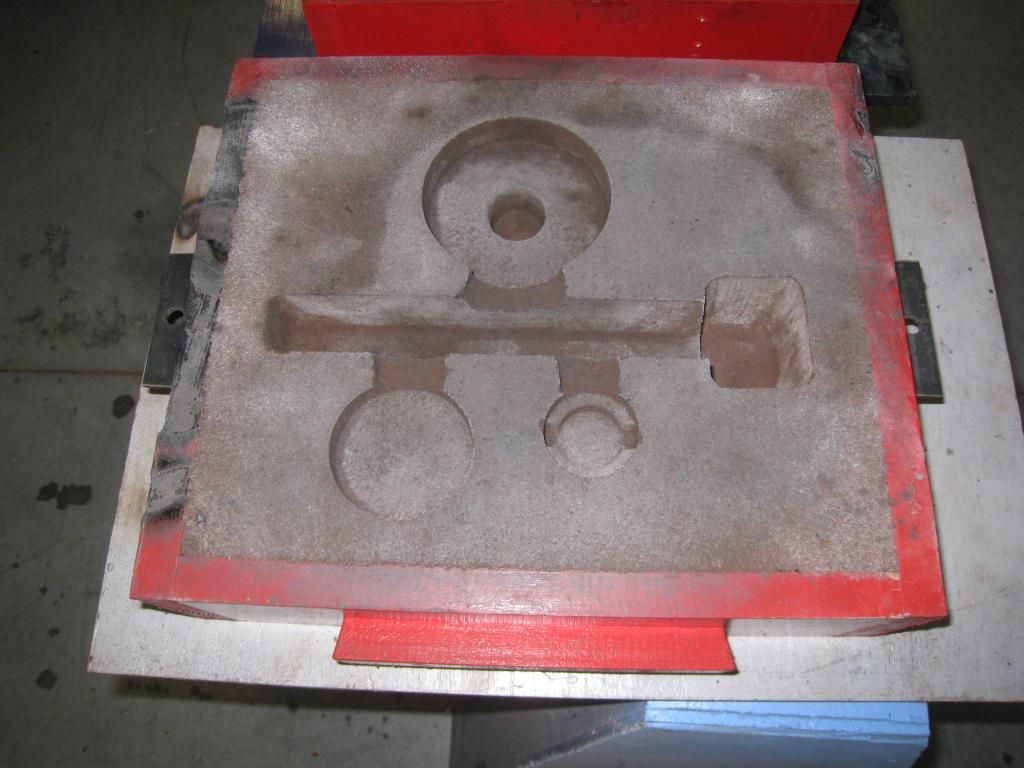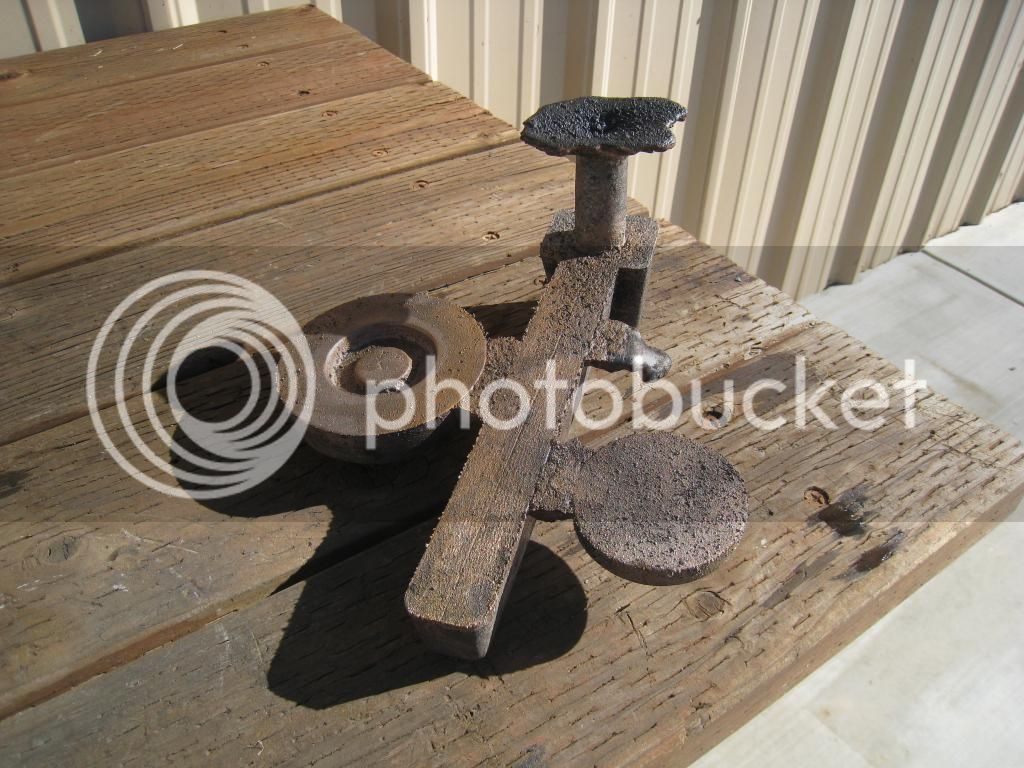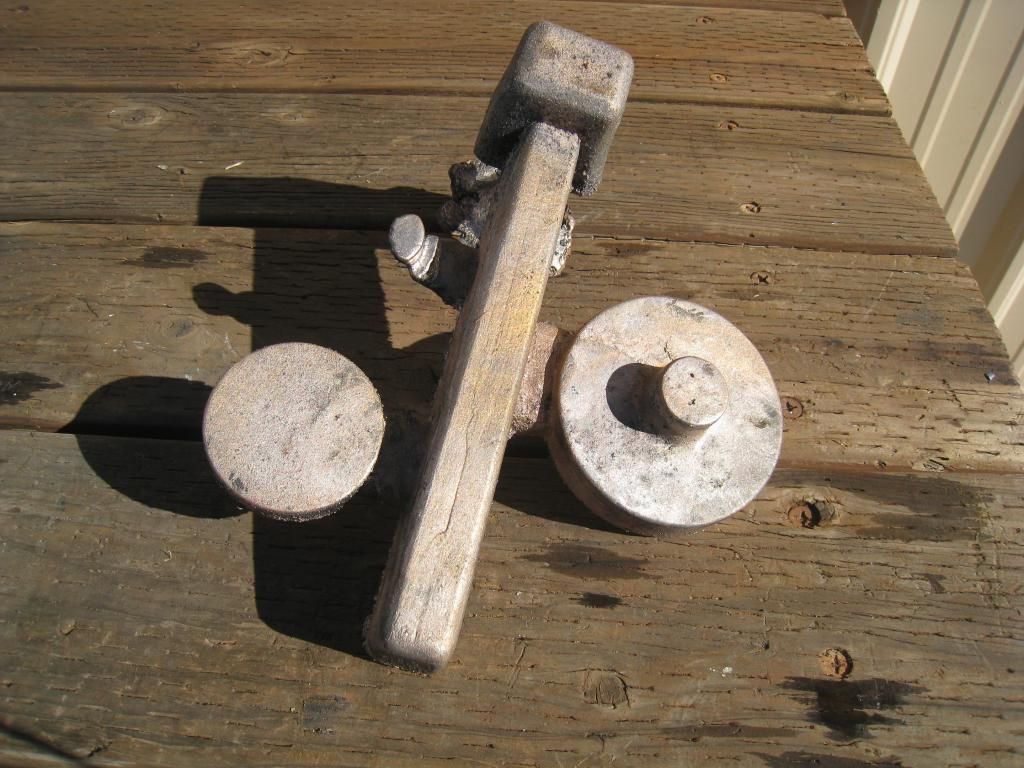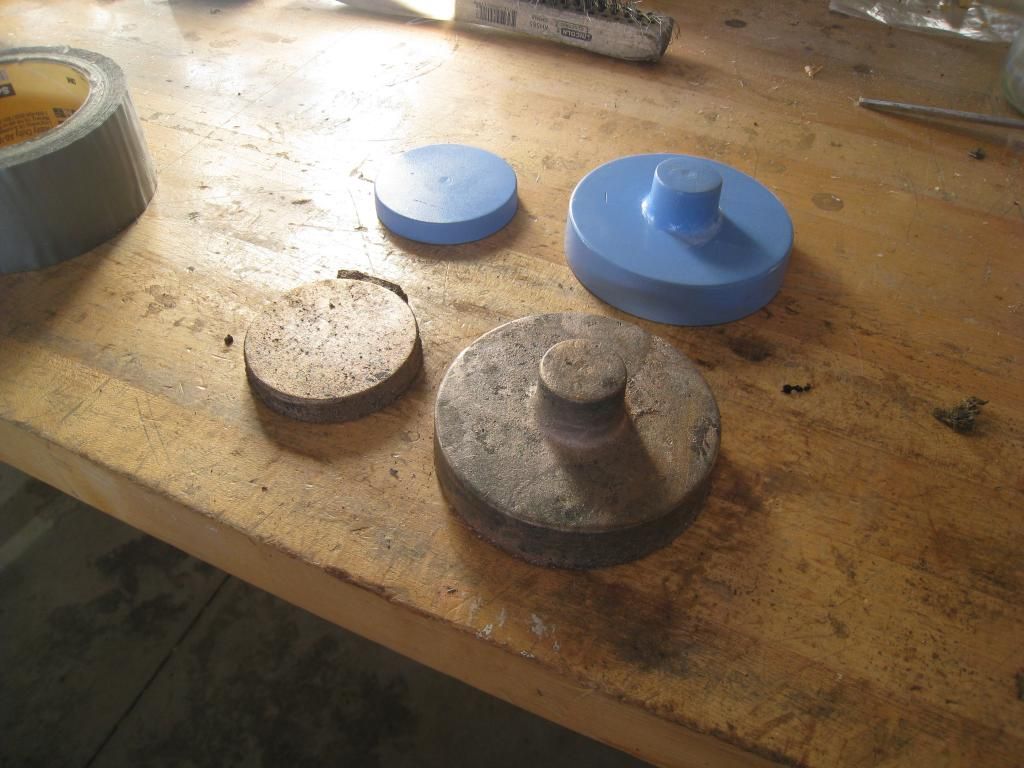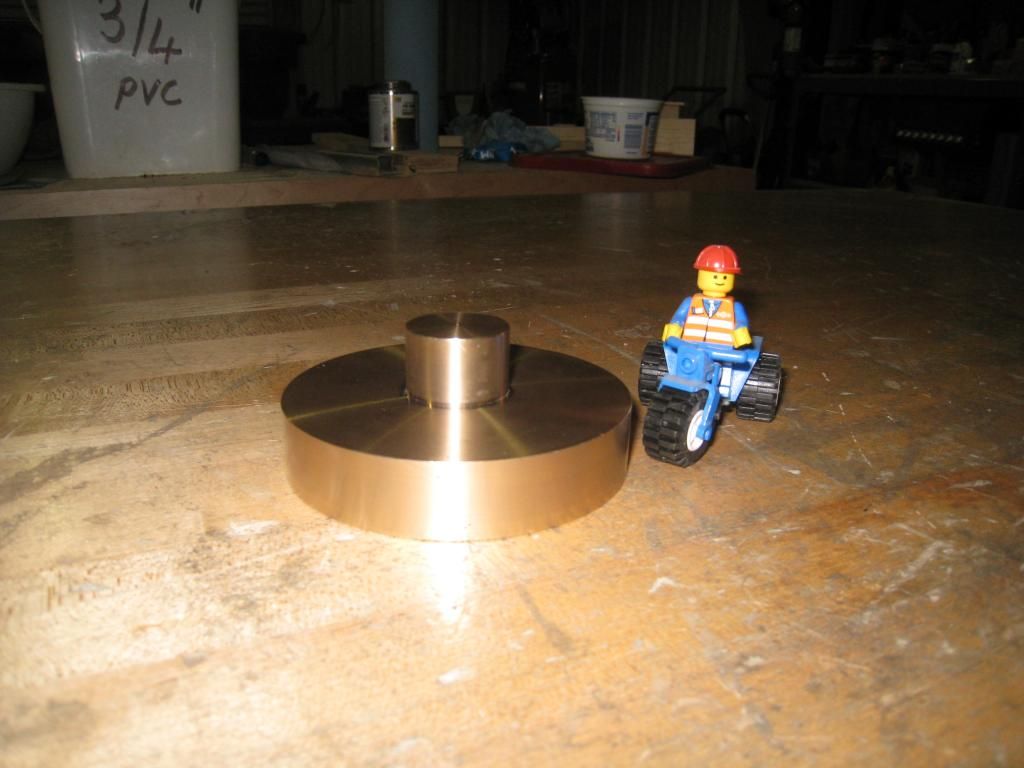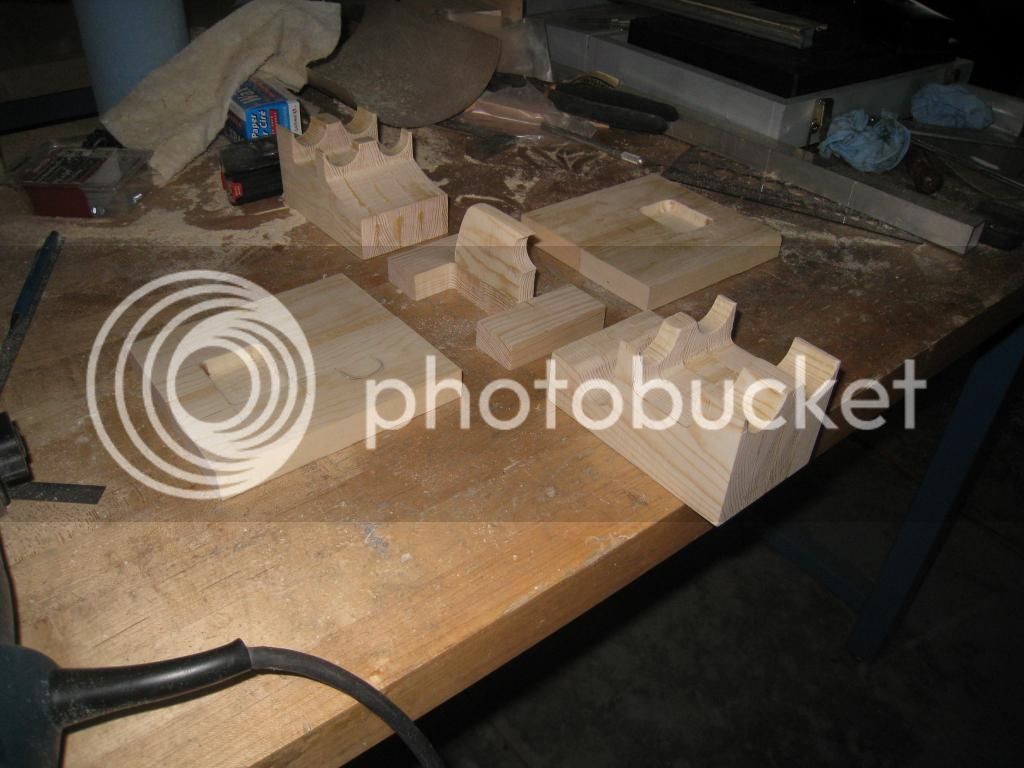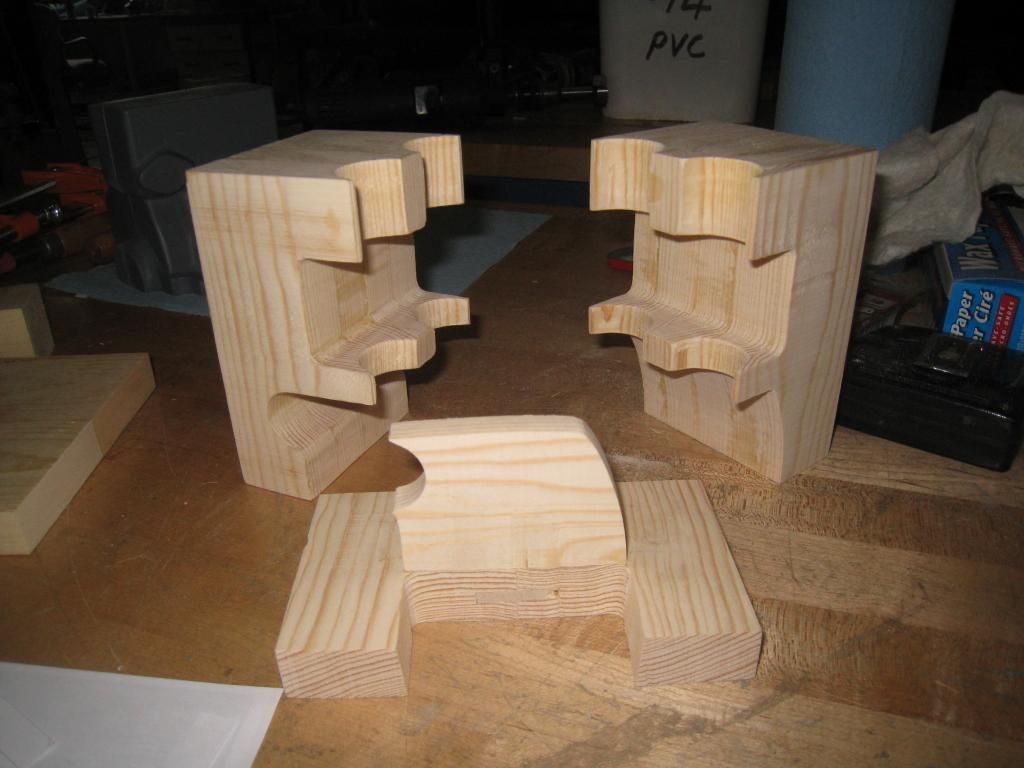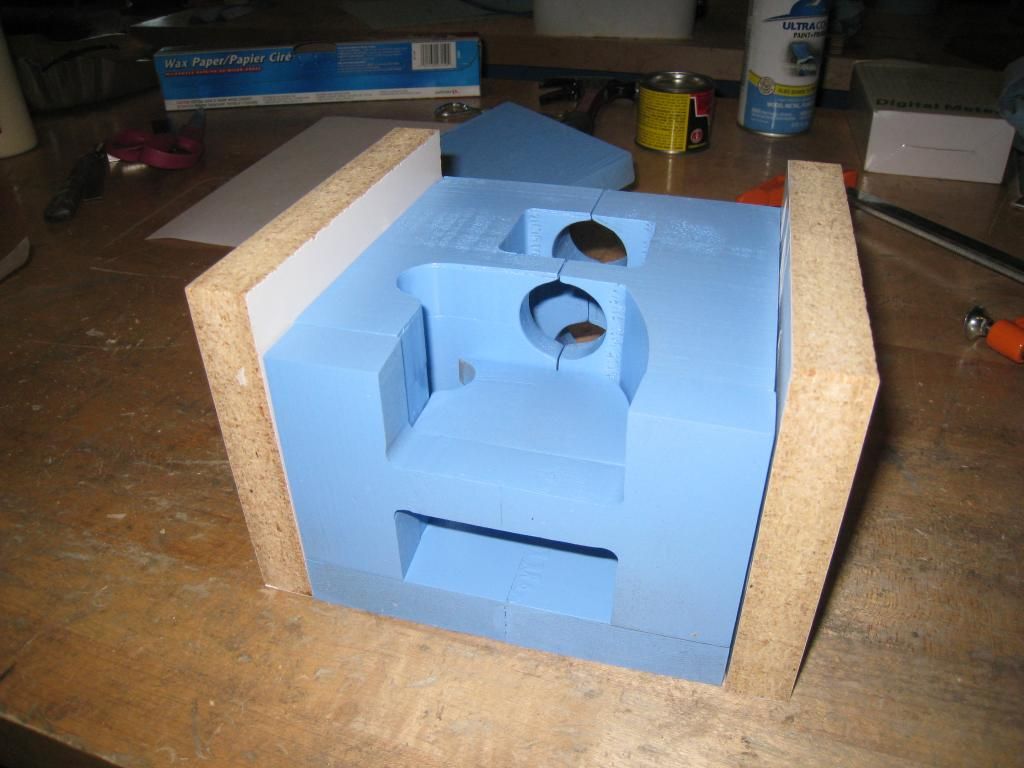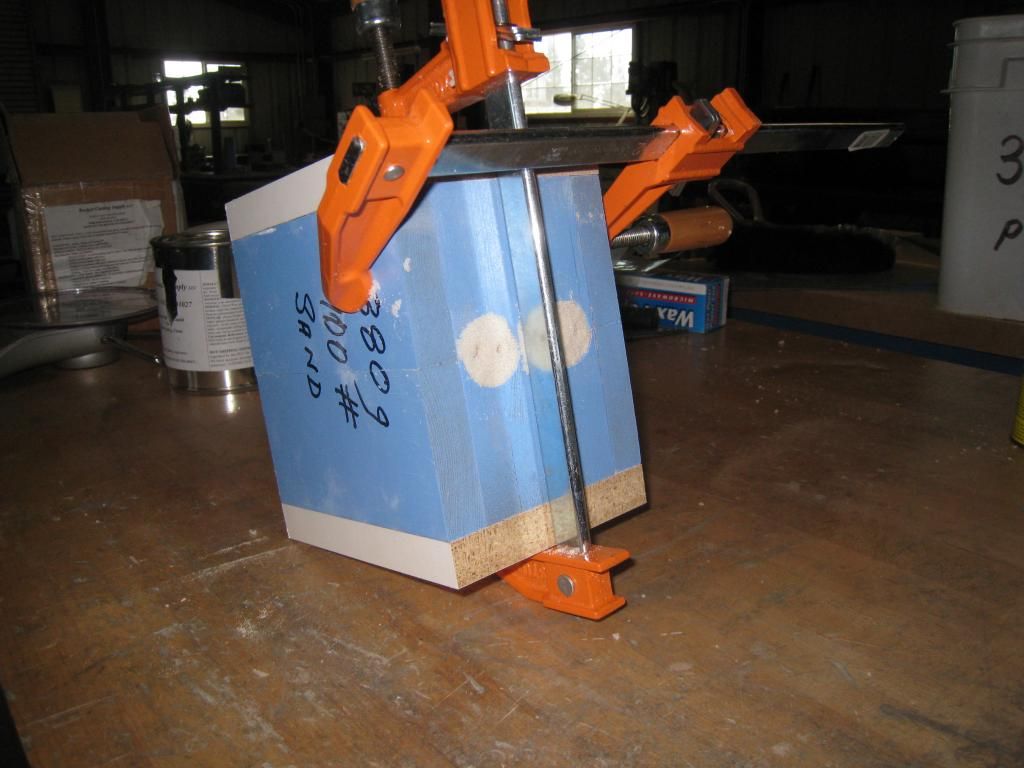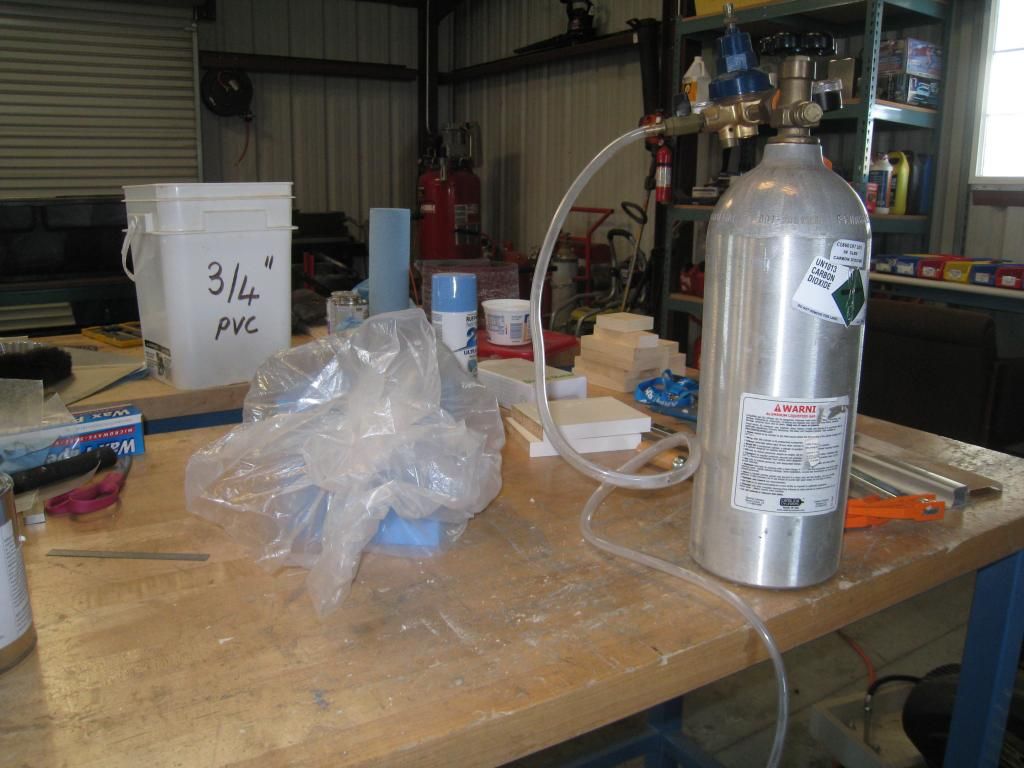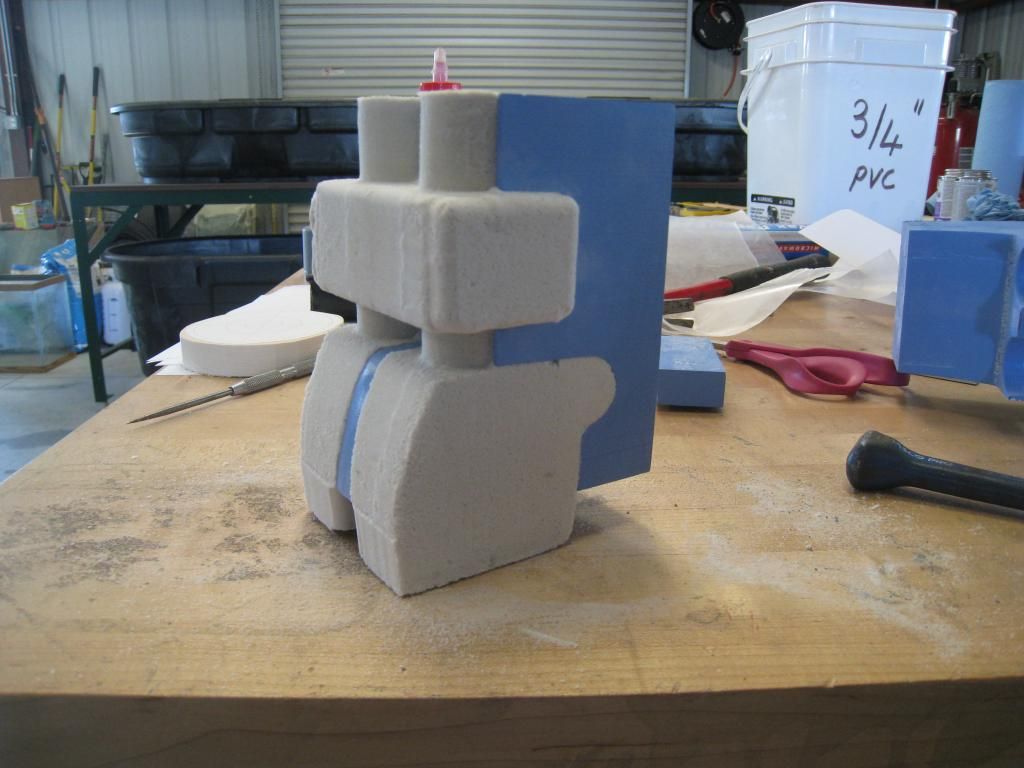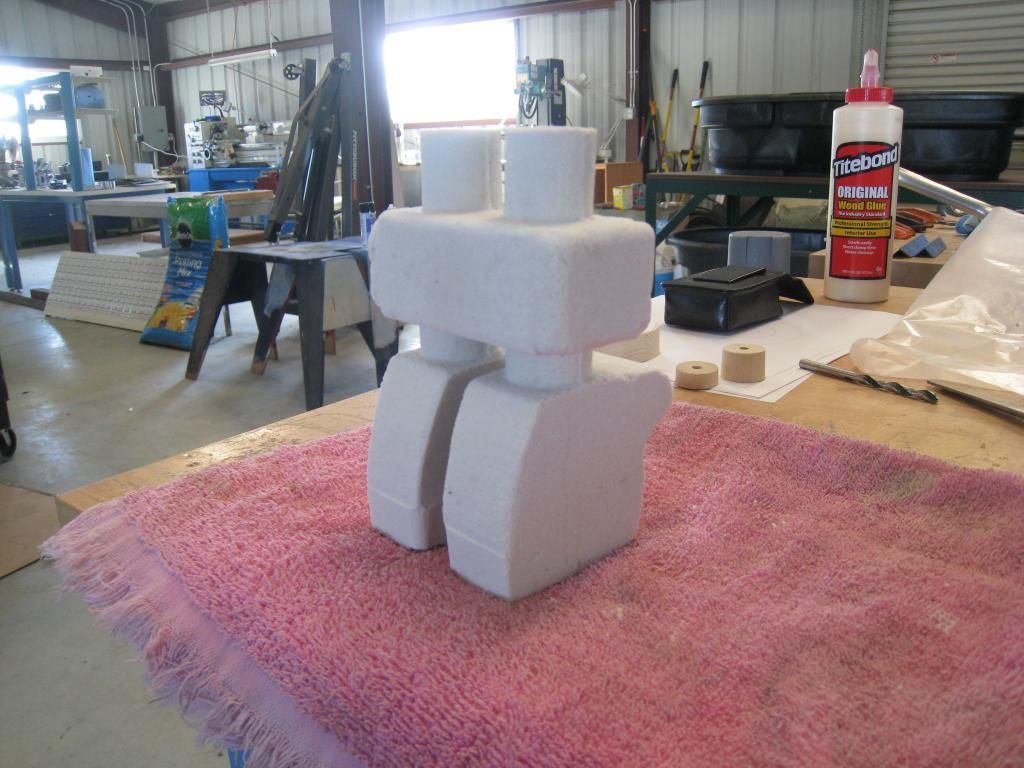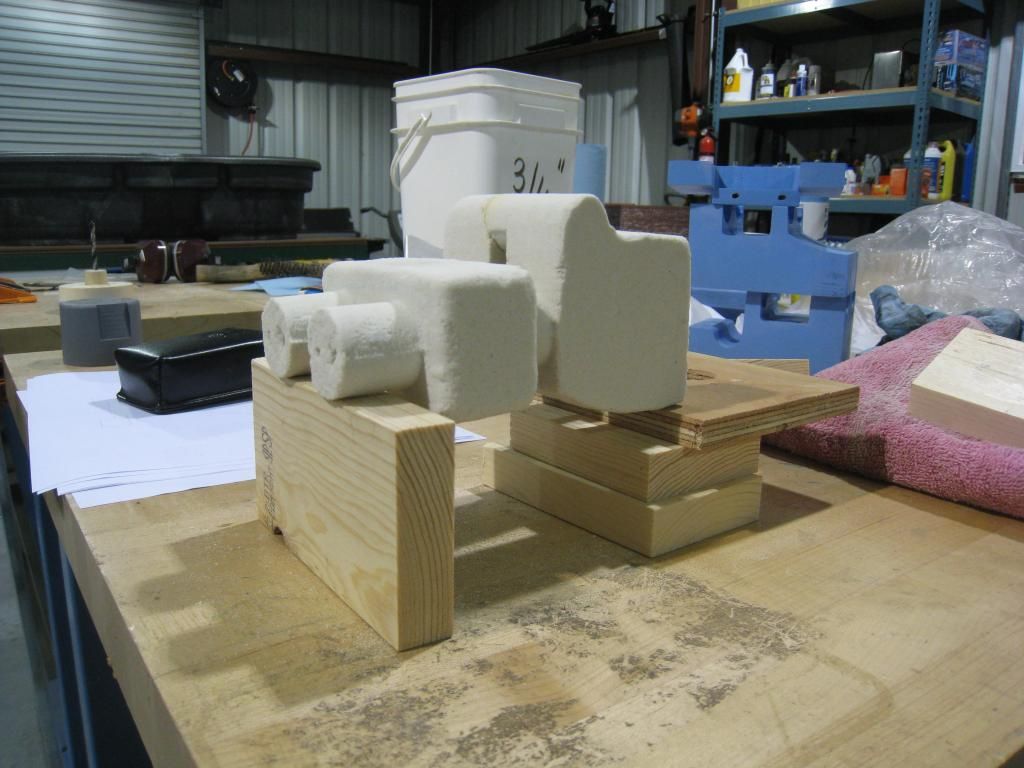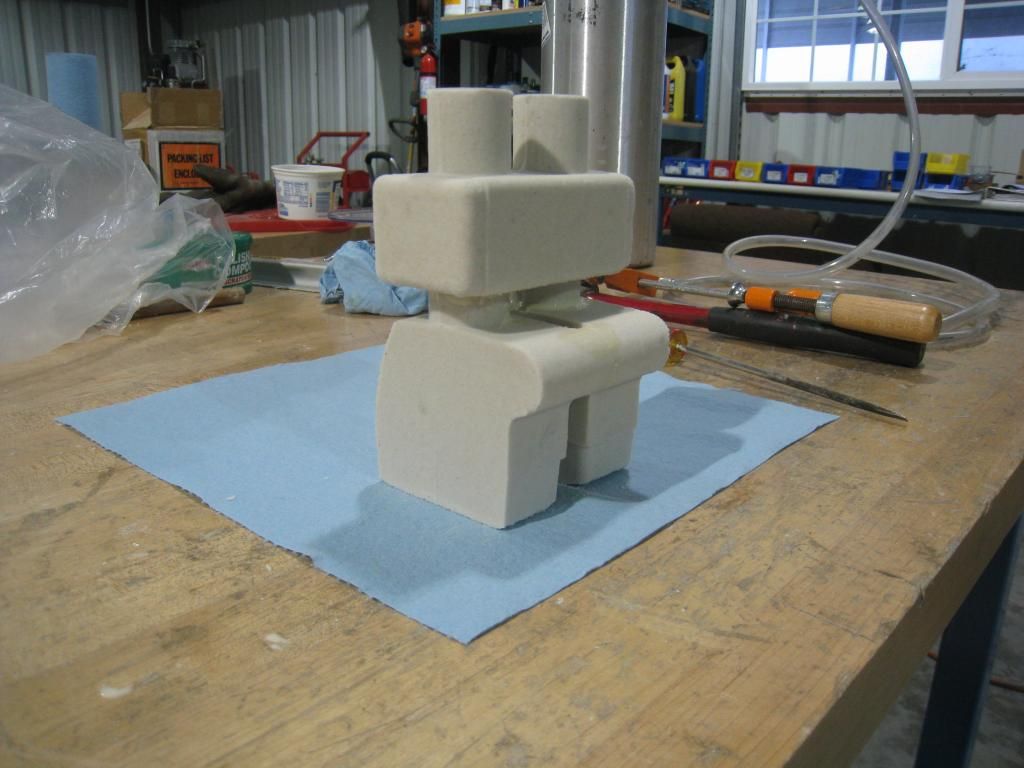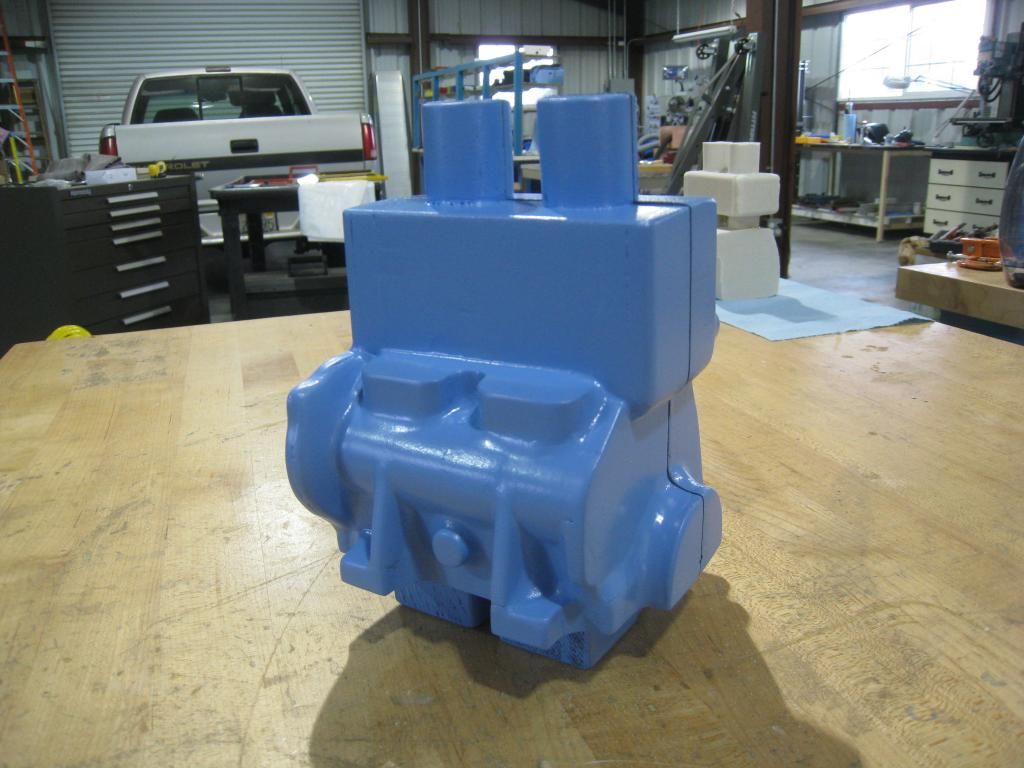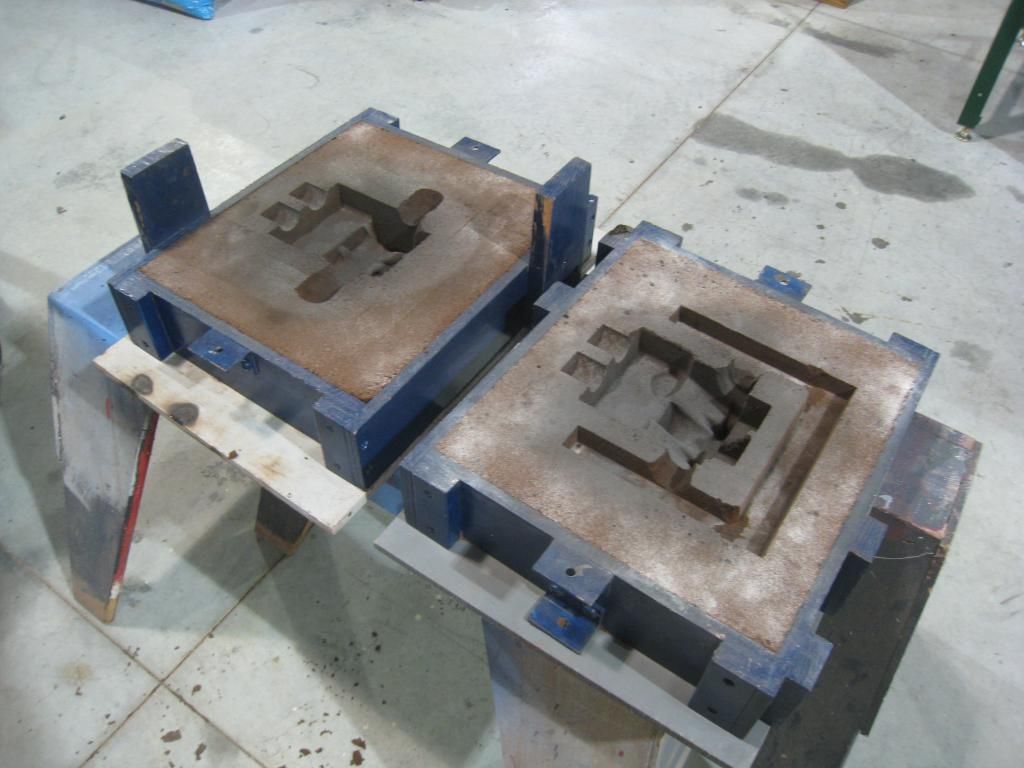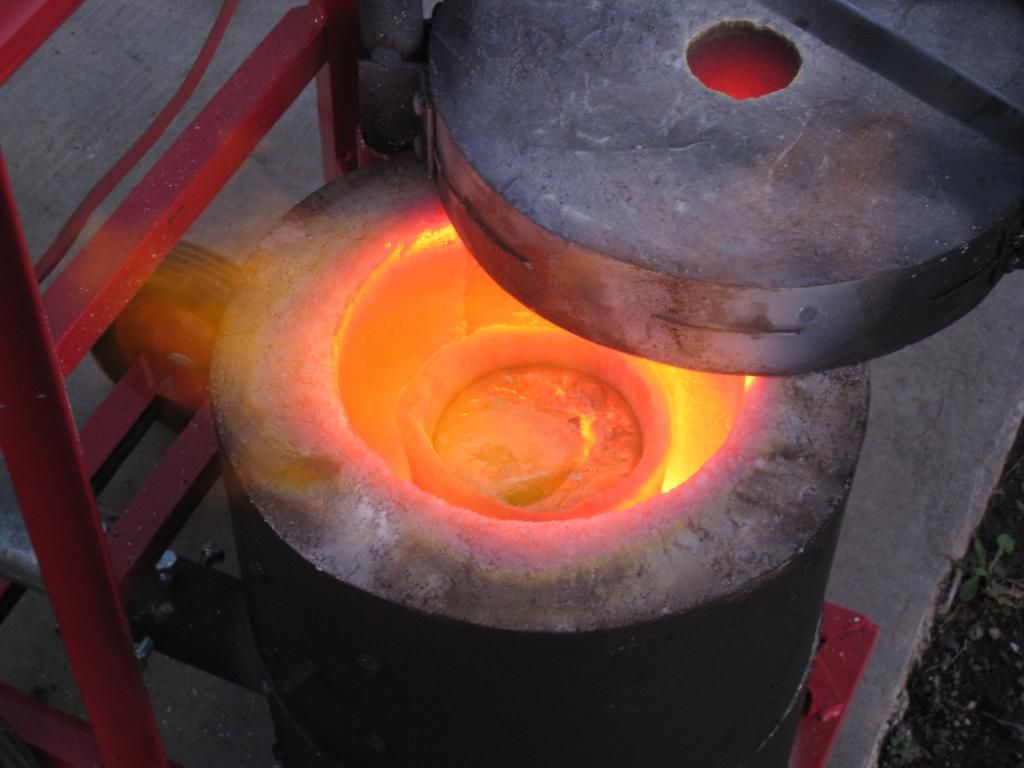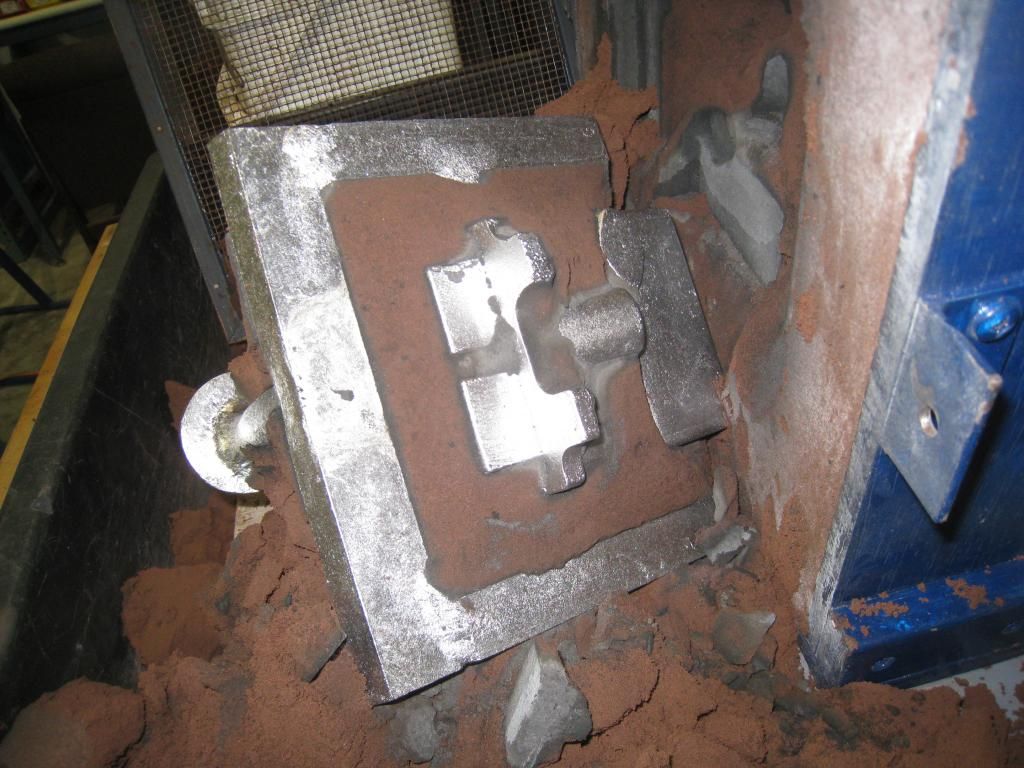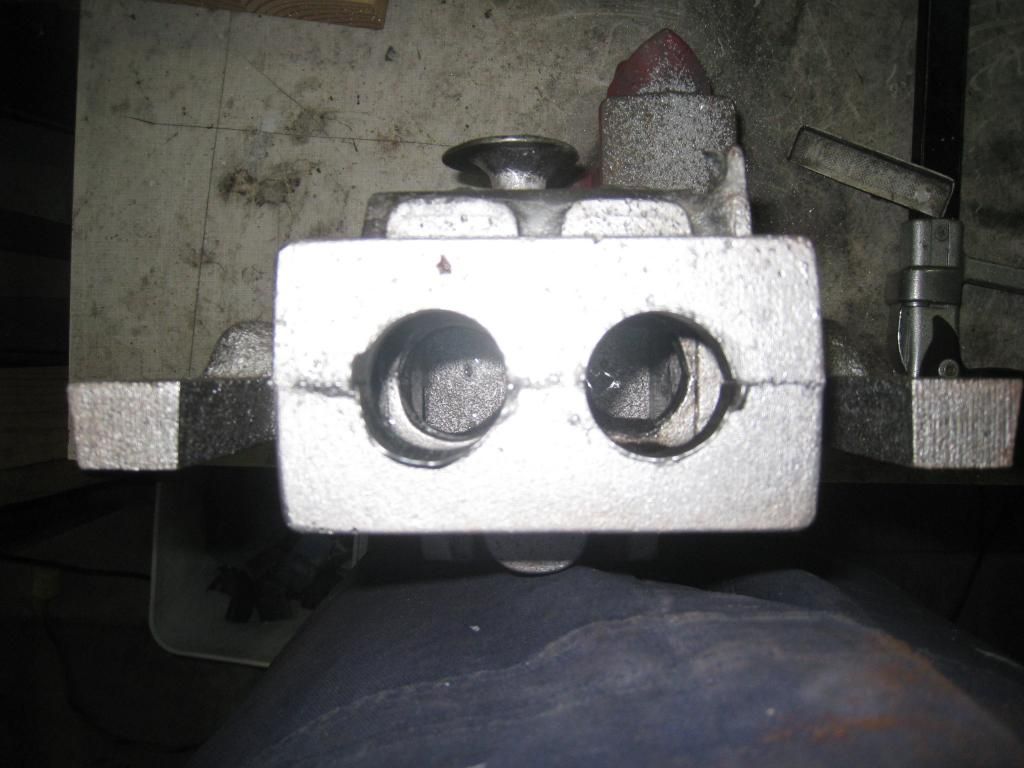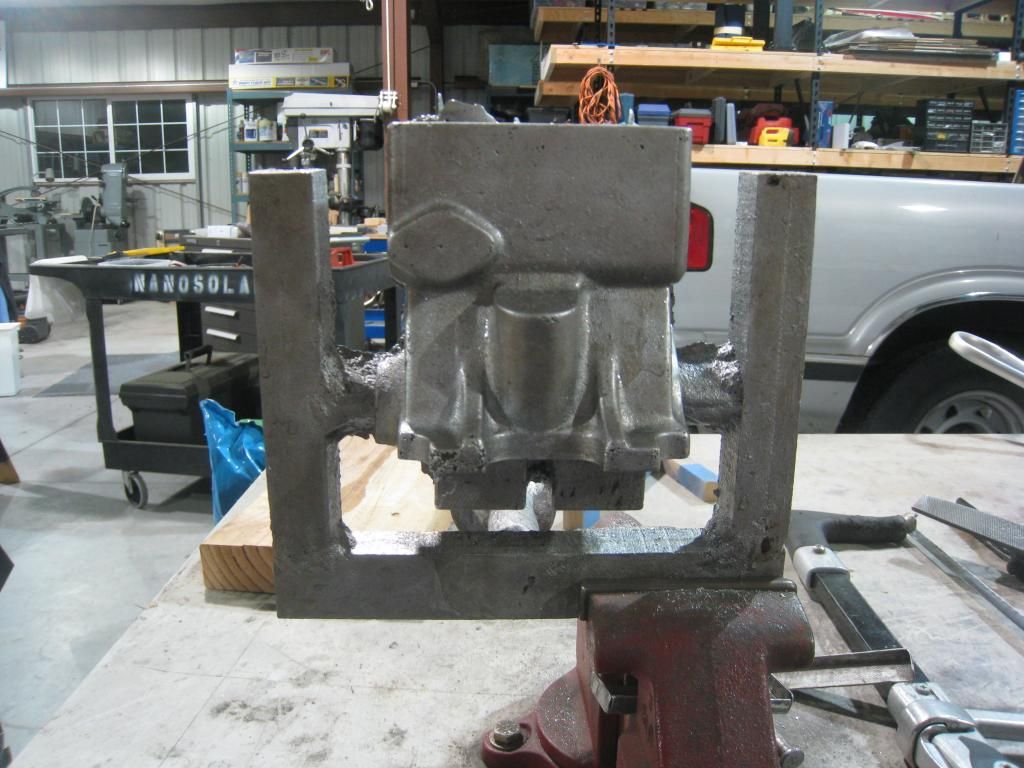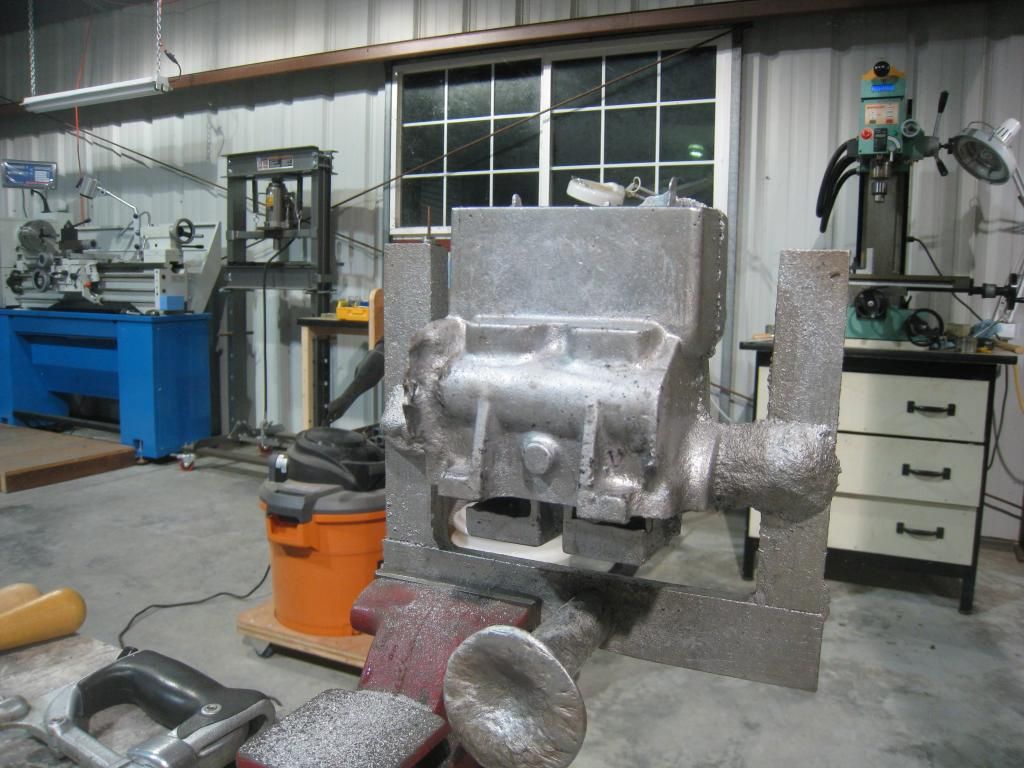Some time ago bezalel2000 posted pics and build notes for a set of Wallaby castings he made from his own patterns. I like casting and pattern making so I was inspired to have a crack at doing the same thing.
The Wallaby is a 2 cylinder, 4 stroke, IC engine with a 360 degree twin configuration. It's an ET Westbury design from the 1940s.
Having obtained the plans, I was surprised to see how small the engine was. I wanted something a bit less fiddly so I scaled everything up by 25%. At the end of the day my engine will be about 50cc.
I started with the sump. The bondo icing is because I made it a bit too short.
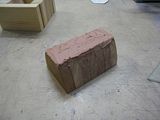
But it cleans up ok....
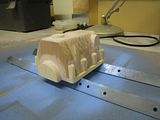
You could possibly use a green sand core with this casting, but I have been frustrated in the past with green cores breaking off when I separated the flask - so I decided to go with a bonded sand core. I have to make a core box:
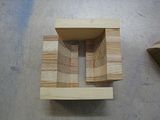
There's a protuberance inside the casting to provide a boss for the oil pickup pipe:
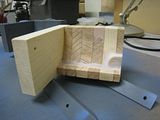
And here's the first article next to its pattern. The finish is pretty good, the pattern pulled nicely and I poured a usable casting first time out. Easy gating and no shrinkage issues at the flywheel end despite the bulk of metal there.
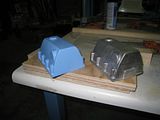
I had used 30# sand for the core of the first casting. That's perfectly usable, but I wanted a finer finish, so the for the next casting I used 100# sand for the core. On the left is the 100# casting, on the right the 30#. The surface finish is definitely better- but the core is harder to make. I use Sodium Silicate as a binding agent, and the finer sand makes it harder for CO2 to penetrate and harden the core. It took a few tries to get the core to harden up properly.
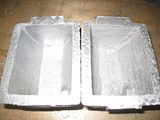
Stay tuned for more pics....
The Wallaby is a 2 cylinder, 4 stroke, IC engine with a 360 degree twin configuration. It's an ET Westbury design from the 1940s.
Having obtained the plans, I was surprised to see how small the engine was. I wanted something a bit less fiddly so I scaled everything up by 25%. At the end of the day my engine will be about 50cc.
I started with the sump. The bondo icing is because I made it a bit too short.

But it cleans up ok....

You could possibly use a green sand core with this casting, but I have been frustrated in the past with green cores breaking off when I separated the flask - so I decided to go with a bonded sand core. I have to make a core box:

There's a protuberance inside the casting to provide a boss for the oil pickup pipe:

And here's the first article next to its pattern. The finish is pretty good, the pattern pulled nicely and I poured a usable casting first time out. Easy gating and no shrinkage issues at the flywheel end despite the bulk of metal there.

I had used 30# sand for the core of the first casting. That's perfectly usable, but I wanted a finer finish, so the for the next casting I used 100# sand for the core. On the left is the 100# casting, on the right the 30#. The surface finish is definitely better- but the core is harder to make. I use Sodium Silicate as a binding agent, and the finer sand makes it harder for CO2 to penetrate and harden the core. It took a few tries to get the core to harden up properly.

Stay tuned for more pics....





